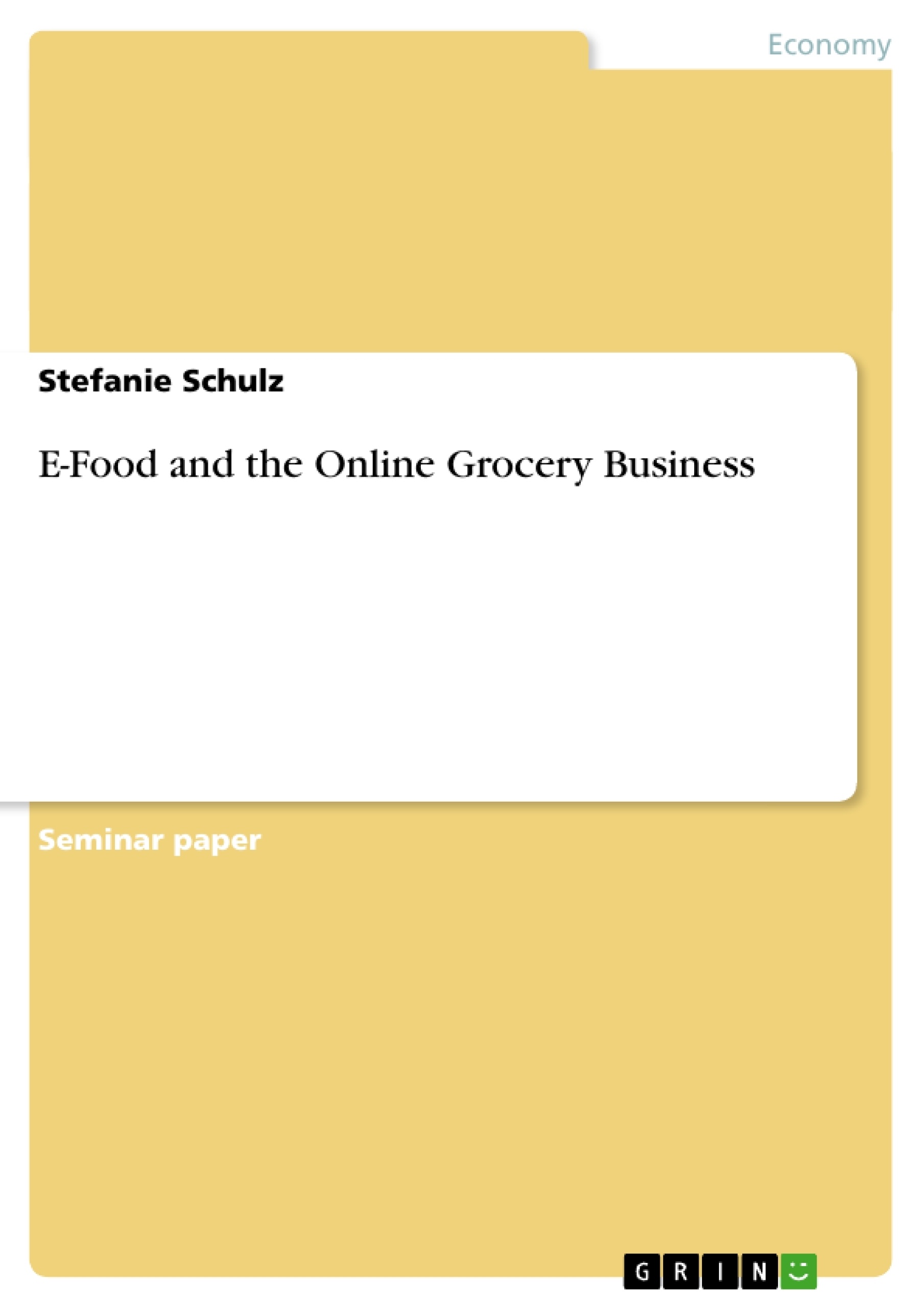Groceries are different from many other products, such as music and books that are commonly purchased online. Many grocery products are perishable and therefore time-sensitive in terms of their delivery needs. In addition, groceries are a replacement product, for example, the same basket of products is more-or-less purchased on a regular basis. Finally, groceries are high-touch items, meaning that consumers like to inspect the quality of items they are purchasing.
Online grocery shopping still is a growing and potent distribution channel that uses direct access methods to allow consumers to shop quickly and take delivery of grocery products without ever leaving their homes, with the computer as the primary method of communication. This environment provides the opportunity to compare and select grocery products in unique and relevant ways in an information-rich environment. Consumers are embracing this online channel as a means of simplifying their lives and saving time.
For researchers, online grocery shopping provides new research applications made possible from the unique ability to link longitudinal transactional data and survey-based attitudinal data at the individual household level. This means fast consumer feedback from a valuable sample, in a controlled environment, as well as the ability to monitor behaviour over time. Also, this environment can be a more efficient and cost-effective means of data collection and analysis than traditional survey research, in some instances.
Inhaltsverzeichnis (Table of Contents)
- A. The objective of the study and the research questions
- Conceptual framework and the key concepts
- B. Market Research Methods and gaining of information
- 1. Secondary Data
- 2. Explanation and evaluation of the different research methods for primary data
- 2.1. Observational Research
- 2.2. Experimentation
- 2.3. User Panels
- 2.4. Survey/Interviewing
- 2.4.1. In-Depth Interviews
- 2.4.2. Telephone interviews & surveys
- 2.4.3. Postal and mail surveys
- 2.4.4. E-mail and web-based surveys.
- 3. Proposal: Personal Interviewing and online surveys as a long-term research tool
- 3.1. Focus Groups as a research tool
- 3.1.1 Limitation
- 3.1.2 Group interview versus individual interview:
- 3.2. Web based surveys as recommended research tool
- 3.2.1 E-mail surveys
- 3.2.2 Web-based survey applications
- Conclusion
- Research Implications and Importance of Online Grocery Shopping
Zielsetzung und Themenschwerpunkte (Objectives and Key Themes)
This research proposal aims to provide a comprehensive understanding of customer value within the e-grocery sector. The primary focus is on customer preferences and their impact on the success of online grocery businesses. The research explores the key issues surrounding the e-grocery business model, including product range, website usability, and additional services offered.
- Understanding the customer value proposition in e-grocery
- Identifying customer preferences regarding product range, additional services, and website usability
- Evaluating the effectiveness of different research methods for gathering insights into online consumer behavior
- Exploring the potential for creating competitive advantage through online grocery software setup
- Developing a robust research tool to track and analyze online consumer behavior
Zusammenfassung der Kapitel (Chapter Summaries)
- A. The objective of the study and the research questions: This chapter outlines the research objectives and defines the key questions guiding the investigation. It highlights the importance of understanding customer value and the strategic decisions involved in the e-grocery business.
- Conceptual framework and the key concepts: This section introduces the core concepts and definitions used throughout the research, focusing on the concept of customer value and how it relates to the e-grocery business model.
- B. Market Research Methods and gaining of information: This chapter discusses various research methods, both primary and secondary, that can be employed to gather insights into the e-grocery sector. It provides detailed descriptions of methods like observational research, experimentation, user panels, and different survey/interviewing techniques.
- 3. Proposal: Personal Interviewing and online surveys as a long-term research tool: This chapter proposes a long-term research strategy, advocating for personal interviewing and online surveys as valuable tools for data collection. It examines the benefits and limitations of focus groups as a research method and emphasizes the potential of web-based surveys as a primary research tool.
Schlüsselwörter (Keywords)
The core focus of this research lies in the field of e-commerce, specifically within the context of online grocery shopping. Key concepts include customer value, e-grocery business model, consumer behavior, research methodologies, online survey tools, and competitive advantage in the online grocery market.
- Arbeit zitieren
- Stefanie Schulz (Autor:in), 2004, E-Food and the Online Grocery Business, München, GRIN Verlag, https://www.grin.com/document/38510



